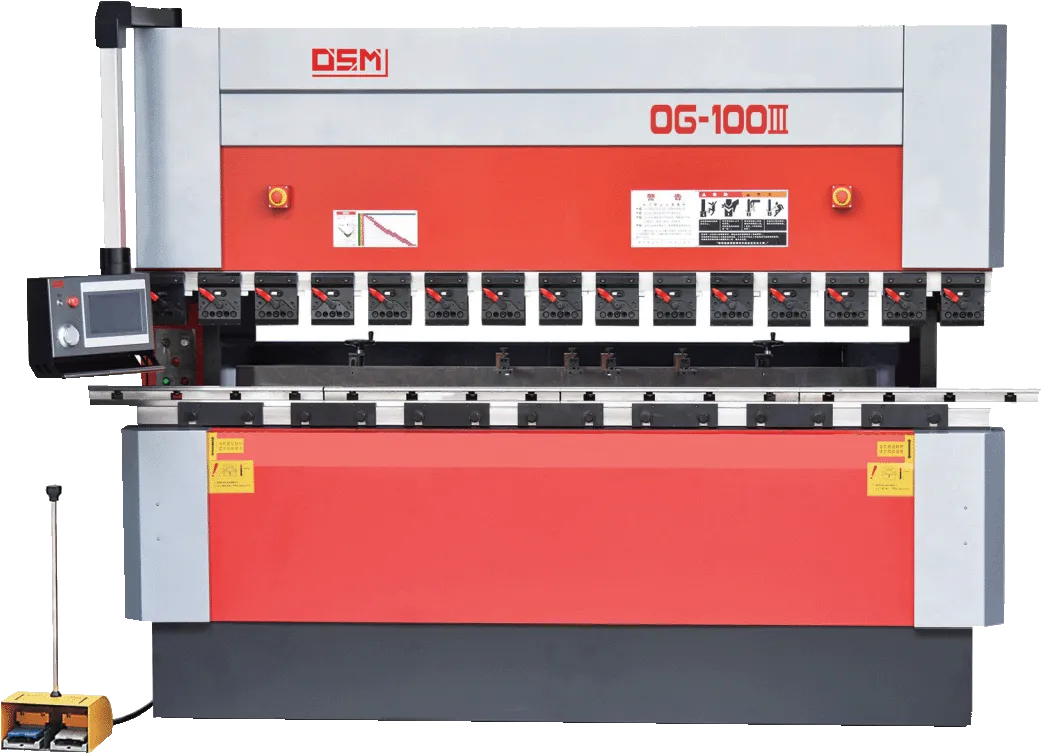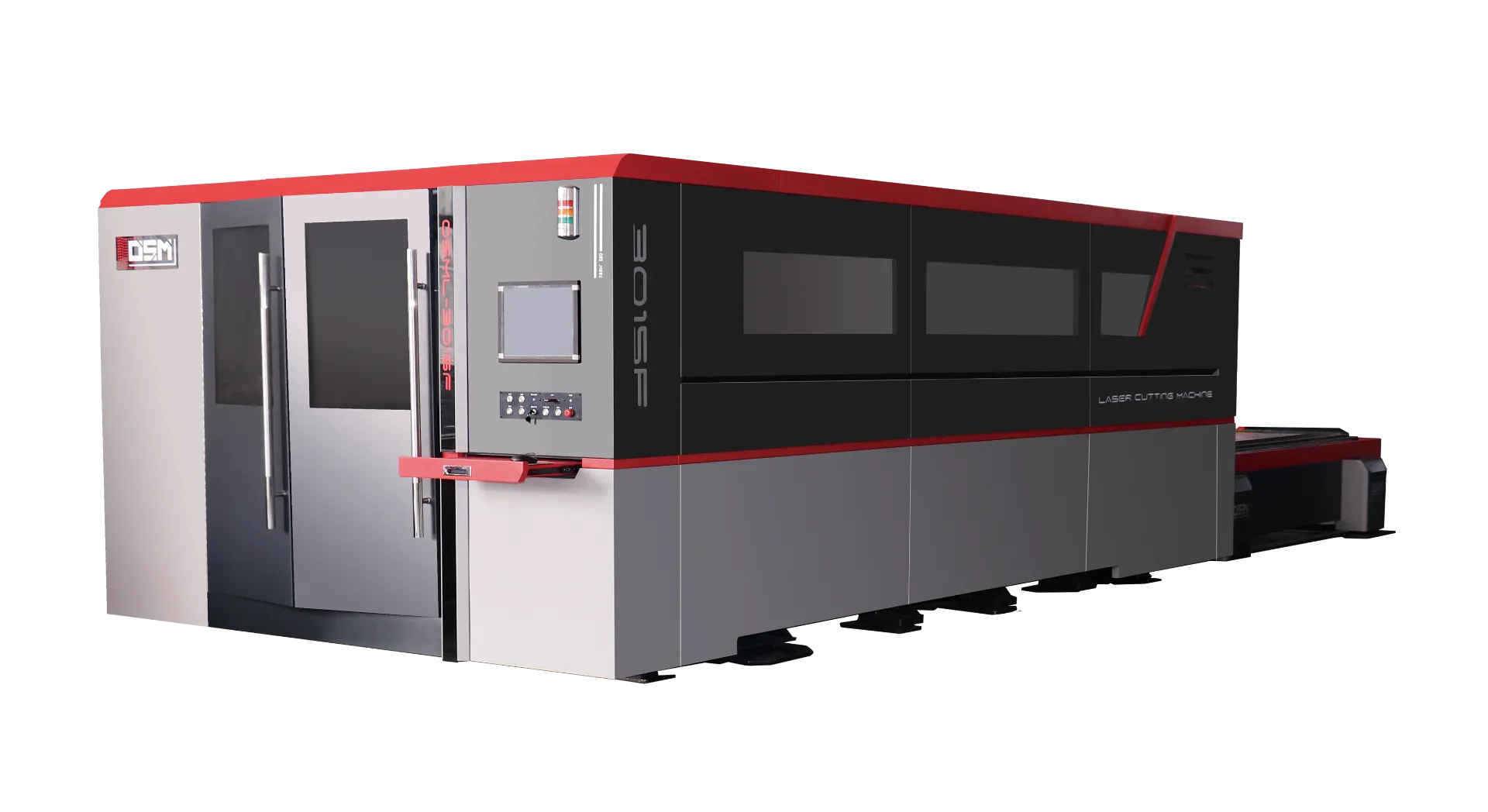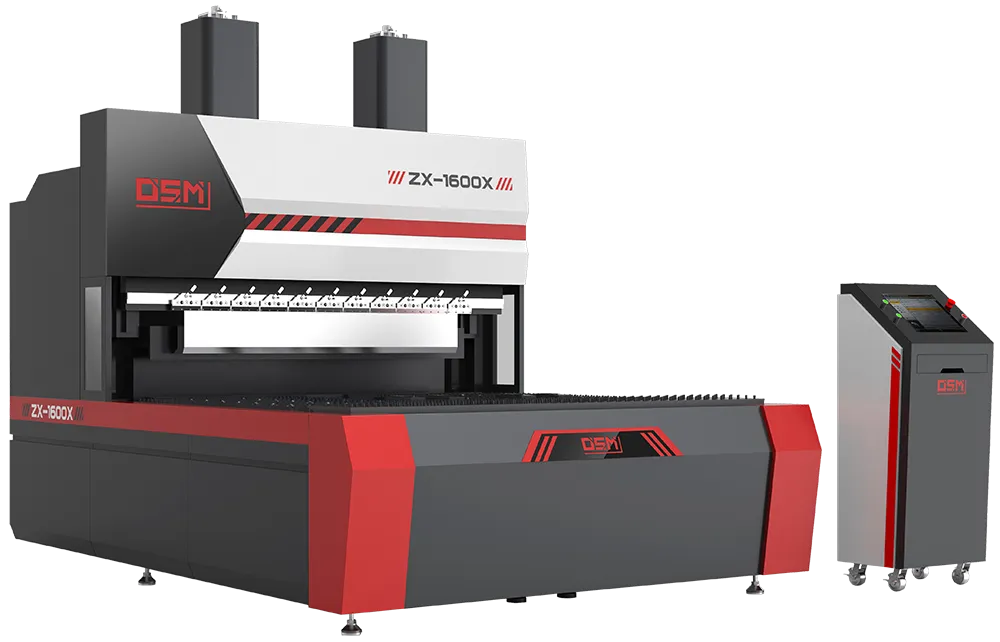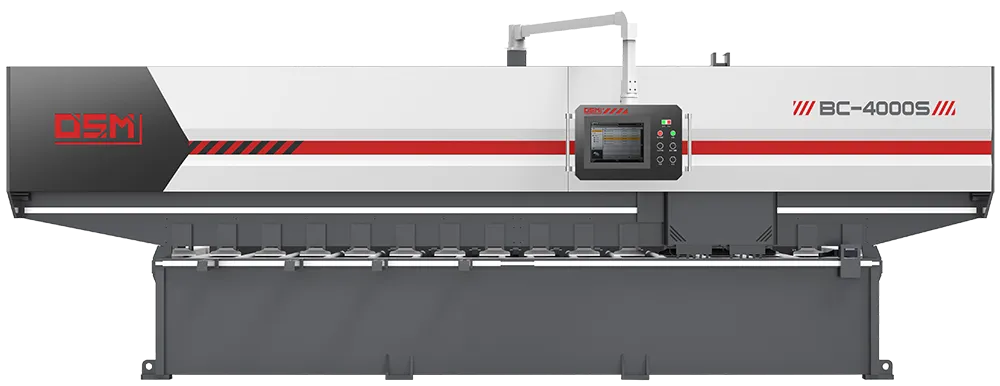What is a down-acting CNC press brake?
A down-acting CNC press brake is a metalworking machine that uses a hydraulic system to drive the lower table upward for bending, controlled by a CNC system to manage ram stroke, angle, and position. It is suitable for industries such as automotive, shipbuilding, and aerospace.
What are the main differences between down-acting and up-acting CNC press brakes?
Table movement direction: Down-acting: Lower table moves upward; Up-acting: Ram moves downward.
Control method: Down-acting: Servo motor + grating ruler for precise positioning; Up-acting: Motor-controlled screw tension.
Tool change speed: Down-acting: No return-to-origin required, higher efficiency.
Operator habits: Up-acting: Shorter table, suitable for small workpieces.
What is the working principle of a down-acting CNC press brake?
High-pressure oil from a hydraulic pump drives the cylinder, pushing the lower table upward to bend the sheet metal. A grating ruler provides real-time feedback, and the CNC system adjusts parameters for high precision.
What are the core components of a down-acting CNC press brake?
Includes a robust frame, high-precision hydraulic system, flexible tool change system, advanced CNC (e.g., NC9/NC10), inclined wedge deflection compensation, and rolling guide synchronization.
What materials are suitable for a down-acting CNC press brake?
Mild steel, stainless steel, aluminum alloy, copper alloy, etc., typically 0.5–6mm thick (refer to equipment specs).
What is the processing accuracy of a down-acting CNC press brake?
Positioning accuracy: ±0.02mm; Repeatability: ±0.02mm; Workpiece straightness: 0.3/m; Bending angle error: <±30′ (model-dependent).
Typical applications of down-acting CNC press brakes?
Automotive (body parts), shipbuilding (hull structures), aerospace (aircraft components), power equipment (enclosures), appliances (housing forming), etc.
Operating procedure for a down-acting CNC press brake?
Check equipment status.
Input program commands.
I Install tools.
Place sheet metal.
Start bending.
Remove workpiece.
Shut down equipment.
How to select the right model?
Evaluate material, thickness, length, bend radius, accuracy, and efficiency. Examples:
16-gauge, 10-foot mild steel: 50-ton free-bending model.
1/4-inch, 10-foot sheet: ≥165-ton model.
Safety operating procedures?
Wear PPE (gloves, safety shoes, goggles); avoid overload; prohibit tool adjustment during operation; check hydraulic oil, pressure gauge, and safety devices regularly.
Maintenance schedule?
Hydraulic oil: Every 3 months; Filter: Every 6 months; Tools: Clean and inspect after each use; Electrical system: Annual inspection.
Common faults and solutions?
Ram won’t descend: Check slides, backstop shaft, pedal switch, proportional servo valve.
Inaccurate angle: Adjust Y-axis parameters, check hydraulic pressure.
Motor stops: Clean proportional valve, replace filter/oil.
Hydraulic system pressure range?
Typically 20–33.8MPa (refer to model specs, e.g., XD-3512: 33.8MPa max).
How is backgauge functionality achieved?
Servo motor drives backgauge mechanism, with grating ruler feedback for ±0.02mm repeatability.
Programming methods?
Manual, graphical, CAD/CAM import; supports NC9, NC10, TP10S, etc.
Energy consumption?
Motor power: 2.2–7.5kW (depends on model, process, and load).
Tool change steps?
Turn off pump.
Release clamps.
Remove old tool.
Install new tool and tighten.
Check alignment.
Environmental requirements?
Temperature: 5–40°C; Humidity: ≤80%; Power: 380V±10%, 50Hz; Floor load: ≥1000kg/m².
Noise level?
No-load: ≤75dB; Full-load: ≤85dB (complies with national standards).
Training content?
Equipment structure, operation, safety, programming, tool maintenance, troubleshooting.
Warranty period?
Typically 12 months; extended warranties (e.g., 24 months) available.
Suppliers?
Domestic brands include Ningbo, Dongduan, AMADA (XD-3512), etc.
Price range?
Small/medium: ¥100,000–¥500,000; Large: ¥500,000–¥2,000,000 (model/config-dependent).
Delivery lead time?
Standard models: 30–60 days; Custom: Negotiable.
Transport methods?
Truck or container shipping; ensure secure fastening and compliance with safety norms.
Installation and commissioning?
Foundation inspection.
Equipment positioning.
Hydraulic system (debugging).
Electrical wiring.
CNC parameter setup.
No-load test.
Load test.
Technical parameter lookup?
Specs via manual, supplier website, or technical handbook (key: nominal force, table length, throat depth, tank capacity).
Spare parts supply?
Suppliers stock common parts; emergency parts arrive in 48–72 hours via global logistics.
Upgrade services?
CNC/hydraulic upgrades, tool library expansion, automation integration.
Certifications?
ISO9001, CE, GB/T 14349 (Chinese mechanical safety standard).
Synchronization accuracy?
Servo motor + grating ruler ensures ≤±0.01mm deviation.
Environmental adaptability?
Some models support -10°C to 50°C; requires heaters/coolers for extreme temperatures.
Noise control?
Silent pump, shock absorbers, sound enclosure, low-noise motor (no-load ≤70dB, full-load ≤80dB).
Electrical protection?
IP54 rating; dust/waterproof components; leakage/overload protection.
Tool life factors?
Material hardness, heat treatment, lubrication, bending cycles, and thickness. High-quality tools last >100,000 bends.
CNC programming languages?
G-code, M-code, ASIST-G (Amada), 3D graphical programming.
Efficiency evaluation?
UPH (units per hour) or bending length/hour (high-precision: 15–30 pieces/hour).
Energy efficiency rating?
GB 30254-2013: Class 1: No-load ≤1.5kW, full-load ≤5kW.
Backgauge stroke range?
300–3000mm; some models support infinite expansion (requires servo drive module).
Tool installation methods?
Quick-clamp (QDC), hydraulic locking, manual bolting (QDC: ≤2 minutes).
Pressure fluctuation solution?
Check proportional valve, accumulator, and oil cleanliness; use online filtration (≤10μm).
Safety devices?
Light curtain, dual-hand buttons, E-stop, guardrails, hydraulic locking (EN 12622).
Software upgrade method?
USB/Ethernet; supports OTA and local firmware updates.
Data storage capacity?
≥1GB internal; supports USB/SD card (1000+ programs, production data).
Remote monitoring?
IIoT platform for status monitoring, fault alerts, and remote diagnostics.
Tool compensation technologies?
Mechanical (wedge), hydraulic, CNC (±0.01mm accuracy).
Electrical cabinet cooling?
Forced air/water cooling; ≤40°C, ≤60% humidity; replaceable filters.
Hydraulic leak detection?
Pressure sensor monitors drop rate; fluorescent dye locates leaks.
Workpiece positioning accuracy?
Laser alignment, vision positioning, servo closed-loop control (±0.005mm).
Backgauge repeatability?
High-precision ball screw and encoder (≤±0.01mm).
Tool cooling methods?
Air, water, or oil cooling; water systems include antifreeze and thermostat.
Electrical component brands?
Siemens (PLC/servo), Schneider (breaker), Omron (sensor), Mitsubishi (inverter).
Hydraulic rust prevention?
Internal tank coating, rust inhibitors in oil; drain oil during long shutdowns.
CNC interfaces?
Ethernet, RS232/485, USB, CAN bus; supports MES/ERP integration.
Hydraulic oil temperature range?
30–50°C; maintain stability with coolers/heaters.
Safety door design?
Transparent acrylic, electric/pneumatic operation, anti-pinch function.
Tool wear detection?
Thickness gauge, roughness meter, vision system.
Electrical lightning protection?
Three-level surge protector (power/signal/ground); ground resistance ≤4Ω.
Hydraulic air bleeding?
Open exhaust valve during pump startup until no bubbles; repeat 3–5 times.
Overheating prevention?
Air/water-cooled heat exchanger; activates at 55°C (≥50L/min flow).
Tool material options?
Cr12MoV, SKD11, H13; HRC58-62; Ti/nitride coatings.
Electrical cabinet upgrade?
Optional IP65 rating for dust/water resistance.
Pressure adjustment range?
10–25MPa; some models offer 12/16/20MPa tiers.
Backgauge calibration?
Laser interferometer or micrometer; adjust screw preload and encoder zero.
Industrial protocols?
EtherCAT, Profinet, Modbus TCP, OPC UA; supports Industry 4.0.
Oil change interval?
Every 2000–3000 hours (based on acidity, viscosity, metal particles).
Tool eccentricity detection?
Pressure sensors monitor cylinder differential; alerts at >5% deviation.
EMI protection?
Shielded twisted-pair cables; EMI filters; ground resistance ≤1Ω.
Cavitation prevention?
Tank above pump; suction line filter; oil viscosity ≥22cSt.
Backgauge accuracy?
0.001mm grating ruler + closed-loop servo (≤±0.008mm repeatability).
Tool surface treatment?
Hard chrome, PVD, or DLC coatings for wear/corrosion resistance.
Cabinet cooling?
Axial fan (≥200CFM) + heat exchanger; ≤45°C.
Oil contamination prevention?
Air filter on tank; ≤5μm filtration; replace filter regularly.
Tool library management?
RFID/QR codes match tools to bending parameters.
Pressure stabilization?
Proportional relief valve + accumulator (≤±0.5MPa fluctuation).
Backgauge speed control?
Servo motor + lead screw (max 100mm/s).
Lightning surge protection?
Three-level SPD (≥40kA discharge current).
Hydraulic shock prevention?
Cushioning at valves/cylinders; extend switching time to 0.2–0.5s.
Tool installation accuracy?
Dowel pins + quick-clamp (≤±0.02mm).
Dust prevention?
Positive pressure filtration; ≥50Pa cabinet pressure; filter replacement ≤3 months.
Oil emulsification prevention?
Condensation-free tank design; ≤200ppm water content.
Remote maintenance?
VPN/4G/5G for parameter adjustment and diagnostics.
Pressure sensor accuracy?
0.1%FS; response time ≤10ms.
Backgauge error compensation?
CNC algorithm corrects screw pitch and thermal deformation.
ESD protection?
Anti-static packaging; operators wear wrist straps.
Oil oxidation prevention?
Antioxidants in oil; stainless steel/galvanized tank.
Multilingual support?
Software interface for 10+ languages (CN/EN/DE/JP).
Oil leakage prevention?
O-ring seals; polyurethane/FKM cylinder seals.
Repeatability testing?
Laser tracker or grating ruler; 10 measurements averaged.
Overheat protection?
IGBT heat sink + fan; reduces frequency above 80°C.
Oil foaming prevention?
Vortex-free tank design; defoamed oil; air release ≤5min.
This article covers all 93 FAQs, maintaining technical accuracy and terminology consistency.








